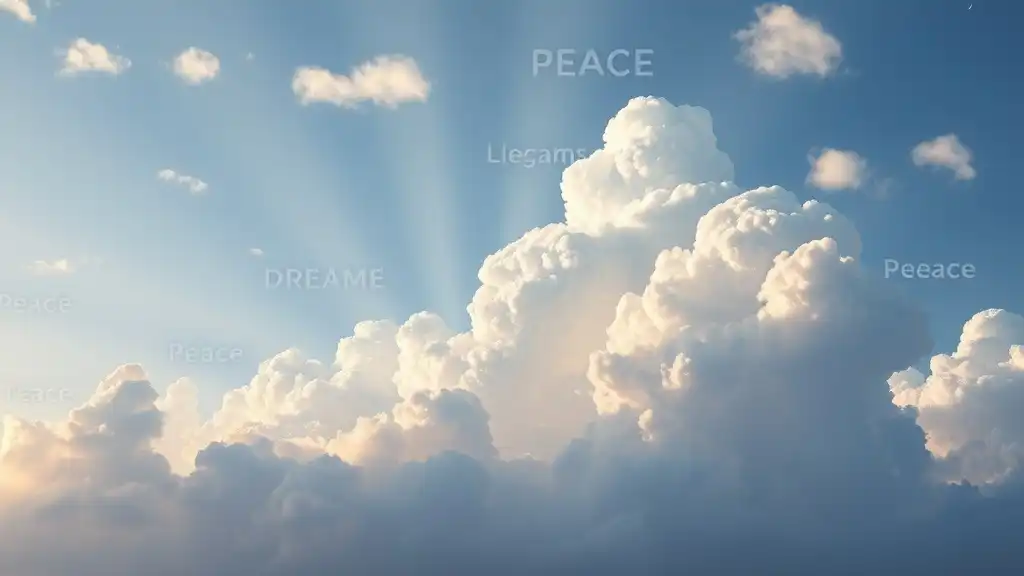Clouds have long captivated humanity, serving not just as meteorological phenomena but also as profound symbols in various spiritual traditions. Across cultures, clouds carry rich meanings, embodying transformations, divine messages, and connections to the cosmos. Understanding the spiritual significance of clouds can enhance our consciousness and deepen our connection to the world around us.
The Connection Between Clouds and the Divine
Clouds as Messengers
Throughout history, clouds have been seen as messengers from the divine. Many cultures believed that the appearance of certain clouds could signal changes or prompt us to pay attention to our surroundings. For example, dark clouds may symbolize looming challenges, while fluffy white clouds can be seen as encouraging signs of hope and optimism. In essence, clouds remind us to be receptive to the messages from the universe, urging us to listen and reflect.
Symbols of Transformation
Clouds are inherently ephemeral, representing the fluid nature of existence. They come and go, illustrating the concept that change is a constant in our lives. Just as clouds transform from one shape into another, we too undergo transformations throughout our spiritual journeys. This symbolism can inspire us to embrace change rather than resist it, allowing for personal growth and new opportunities.
The Elemental Connection
Clouds embody the elements of water and air, providing a unique connection to spiritual practices. Water represents emotions, intuition, and the subconscious, while air signifies intellect, communication, and higher thoughts. Together, they serve as bridges between our inner worlds and the external universe. Recognizing this connection can help us align with our deeper selves, promoting clarity and enlightenment.

Different Types of Clouds and Their Spiritual Significance
Cumulus Clouds
Cumulus clouds are often viewed as symbols of innocence and hope. These fluffy, white clouds evoke feelings of comfort and positivity. They can signify that the turbulence of life is behind us and that brighter days are ahead. Seeing cumulus clouds can be a gentle reminder to cultivate joy and maintain a childlike wonder about the world.
Stratus Clouds
Stratus clouds invoke a sense of serenity and calm. Their flat, uniform appearance can represent stability and grounding in the midst of upheaval. When we encounter stratus clouds, it may be a call to slow down and enter a state of mindfulness, allowing us to reconnect with our inner peace and create space for self-reflection.
Cirrus Clouds
The ethereal, wispy nature of cirrus clouds brings forth themes of higher consciousness and spiritual awakening. They often appear at high altitudes, symbolizing aspirations and dreams that reach beyond the mundane. Cirrus clouds invite us to pursue our spiritual endeavors, encouraging us to expand our horizons and connect with our highest selves.
Thunderstorm Clouds
On the other hand, thunderstorm clouds can signify challenges and emotional turmoil. They remind us that storms often precede growth and transformation. While their presence may evoke fear or anxiety, these clouds serve as a reminder that discomfort can lead to clarity, enabling us to confront our fears and evolve. Embracing the storms in our lives can ultimately teach us resilience and strength.

Clouds in Various Spiritual Traditions
Indigenous Perspectives
Many Indigenous cultures hold deep reverence for clouds, viewing them as sacred elements of nature. For instance, in Native American spirituality, clouds are often seen as manifestations of the Great Spirit, connecting the Earth and sky. Ceremonies may be performed to honor the clouds, demonstrating gratitude for the life-giving water they provide.
Eastern Spirituality
In Eastern philosophies, such as Buddhism and Taoism, clouds represent impermanence and the cyclical nature of life. They remind us of the importance of living in the moment and appreciating the transient beauty of existence. This perspective encourages practitioners to detach from material possessions and embrace the fluidity of life.
Western Mysticism
In Western mystical traditions, clouds often symbolize the mystery of the divine. They can represent both the separation and connection between the earthly realm and the celestial. Many mystics interpret the presence of clouds as invitations to seek higher truths and connect with the spiritual realm more deeply.

The Personal Connection: Interpreting Clouds in Your Life
Observing Clouds for Guidance
To cultivate a personal connection with clouds, take time to observe them in your daily life. Look for patterns and shapes, and reflect on the feelings they evoke. Ask yourself what messages they might convey regarding your current experiences. This practice encourages mindfulness and enhances your ability to recognize spiritual guidance.
Journaling Your Cloud Insights
Consider keeping a cloud journal where you can document your thoughts and feelings about the clouds you encounter. Write down the colors, shapes, and emotions they inspire within you. Over time, you may notice patterns or recurring themes, leading to a deeper understanding of your spiritual journey and personal growth.
Meditation Practices Involving Clouds
A powerful meditation practice involves visualizing clouds as you enter a calm state of mind. Picture yourself surrounded by different types of clouds and allow their energies to wash over you. Focus on the messages you receive from each type of cloud, reflecting on what they represent during your meditative journey. This practice can help foster clarity, insight, and a deeper connection to your spiritual path.

Conclusion
The spiritual meanings of clouds offer a beautiful tapestry of insights and reflections. By exploring their significance, we can open ourselves to the messages they carry and the transformations they represent. As you look to the sky, remember that clouds are not just a part of our environment; they are also powerful symbols urging us to embrace change and seek our higher selves. Encourage yourself to explore the personal connections between clouds and your own life as you embark on this ongoing spiritual journey.



















